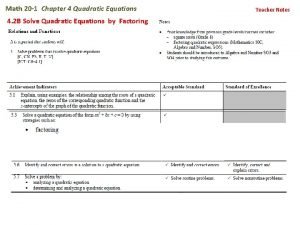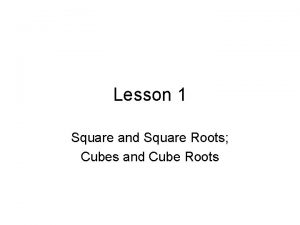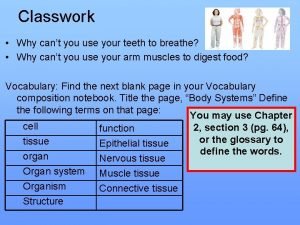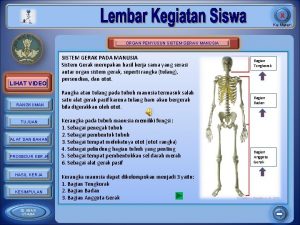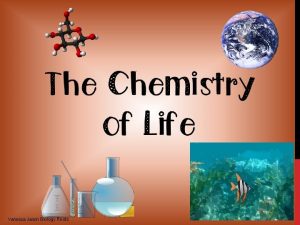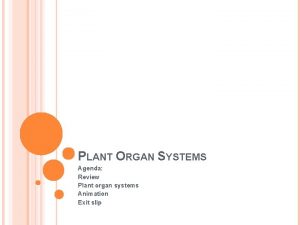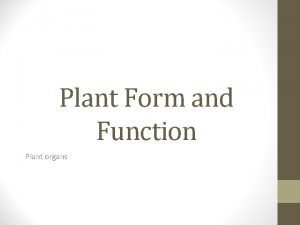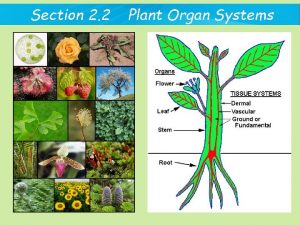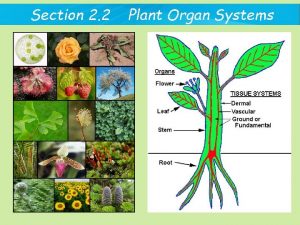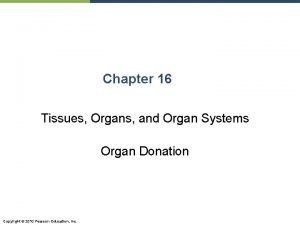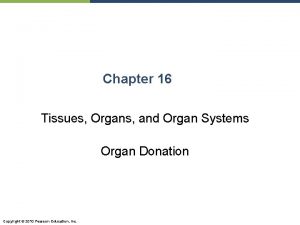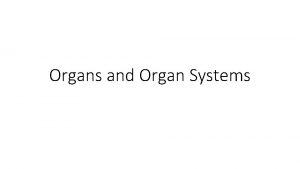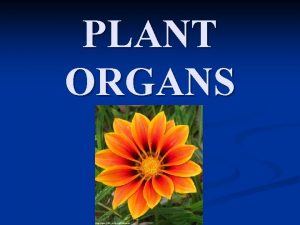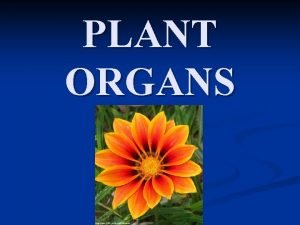Plant Organs and Organ Systems Plant Organs Roots










- Slides: 10

Plant Organs and Organ Systems

Plant Organs • Roots – Anchor the plant in the soil, which allows the plant to grow vertically. – Collect water from the surrounding soil and transport it to the stem. – Stores food that is made in other parts of the plant.

• Leaf – Main function is to support photosynthesis in the mesophyll (turning carbon dioxide and water into sugar and oxygen) – Xylem carries water and minerals needed from the root to the leaf, and phloem carries sugar to the rest of the plant or to the root for storage. – CO 2, and excess H 2 O enter and/or exit through openings called stomata, which are controlled by guard cells.

• Stem – Transports water and nutrients throughout the plant – Supports the leaves and flowers – Epidermis provides a protective covering and allows for gases and water vapour to enter/leave the cell. – Most plants have a cuticle (waxy substance) on the stem to protect the stem and to reduce water loss.

• Flower – The reproductive structure of the plant. – The flower contains male (stamens) and female (pistil) sex organs. – Each stamen consists of a filament with an anther at the tip, which produces pollen. – The pistil consists of the stigma, style, and ovary (where the eggs are located). – When the pollen and an egg unite, the fertilized eggs become a seed. – Some seeds are surrounded by a flesh (the fruit) which others have a hard shell.

Plant Organ Systems • A plant has two organ systems: – the shoot system – everything above the ground (the stem, leaves, buds, flowers, and fruits) – the root system – everything below the ground • These two systems and the organs within them are interdependent, just as the organs in an animal are.

Example 1: Water moving in a plant. – Both the root and shoot system play a role in moving water through the plant. – The roots can push water a few meters up the plant – however many plants are over 100 m tall, so the plant needs more than just the roots to push the water against gravity up the xylem to the leaves. – The key to moving the water is called transpiration. – Transpiration is the evaporation of water through the stomata in the leaves.


– Remember that water is a polar molecule and they are attracted to each other. When water evaporates from the leaves, it creates tension that pulls the adjacent water molecule up the xylem. – Plants loose a large amount of water due to transpiration. An acre of corn looses over 400, 000 gallons of water in a growing season. This is why plants need water on a consistent basis.

Example 2: Enduring Changes in the Environment – In cases of environmental changes, hormones in the plant are delivered to specific tissues. – When the amount of sunlight increases, these chemical messengers are delivered to stimulate flower production. – In times of drought or excessive heat, a plant may decrease its production of leaves, so excessive water is not lost through the stomata.
 Existence and uniqueness of square roots and cube roots
Existence and uniqueness of square roots and cube roots Organ and organ system
Organ and organ system Estimating square roots notes
Estimating square roots notes Sum of the roots and product of the roots formula
Sum of the roots and product of the roots formula Opposite of squaring
Opposite of squaring Cell tissue organ organ system organism
Cell tissue organ organ system organism Cells are the building blocks of all living things
Cells are the building blocks of all living things Organ penyusun sistem rangka
Organ penyusun sistem rangka Foto rontgen efusi pleura
Foto rontgen efusi pleura Sistem koordinasi
Sistem koordinasi Biology roots vanessa jason
Biology roots vanessa jason



